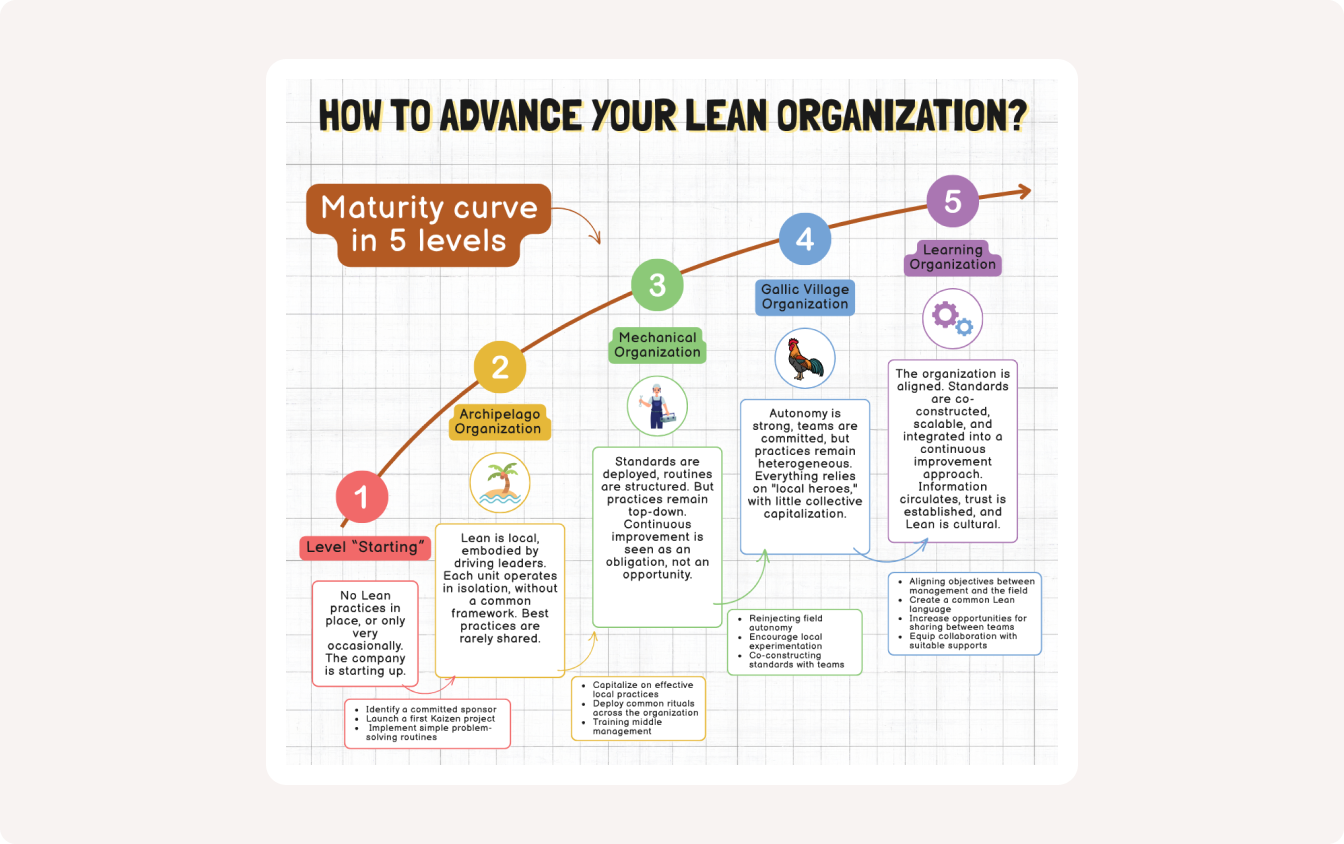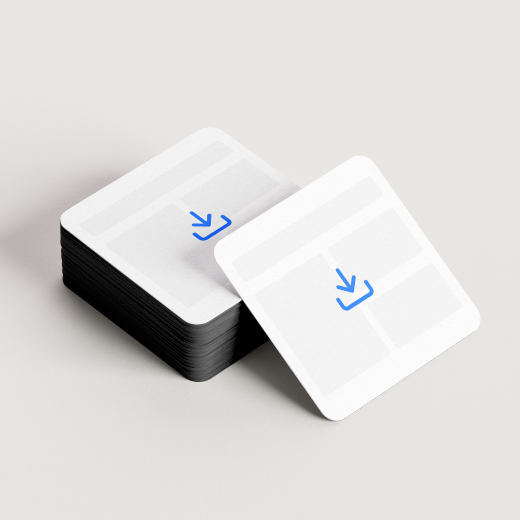LeanVisual Management
- 8 minutes read
Through the transformative power of digital Obeya, The Grain Republic has seamlessly integrated visual management into their operations

When we talk about Lean, many immediately think of tools: 5S, VSM, DMS, Kaizen, Kanban… But Lean is above all a culture, a progressive transformation of management practices, collaboration, and the relationship with the field.
So where to start when you want to improve? How do you know where your organization stands? Today, I’m offering you a 2-step plan:
1 – Self-assess your organization’s current level
2 – Discover key levers to move to the next level
Adopting a Lean approach doesn’t mean “doing Lean” occasionally. It’s about deeply changing how you lead, engage, solve problems, and work together.
That’s why many companies implement standards, rituals, tools, but struggle to make them come alive.
The challenge? Moving from a logic of application to one of ownership.
But how do you know where your organization stands? iObeya’s teams have designed a 5-level maturity curve, based on field feedback and real-world evolutions observed in many industrial and service environments.
This model allows a company to quickly locate itself, by observing three key dimensions:
Here are the 5 levels of maturity:
No Lean practices in place, or only occasionally. The company is just starting. Everything needs to be built.
Lean exists locally, driven by enthusiastic leaders. Each unit operates in isolation, with no shared framework. Best practices are rarely shared.
Problem-solving: Relies heavily on individual site leaders, with little sharing of solutions across units.
Operational management: Each unit operates independently, with minimal coordination or standardization.
Lean behaviors: Lean practices are inconsistent and fragile.
Standards are deployed, routines are structured. But practices remain top-down and inflexible. Continuous improvement is seen as an obligation, not an opportunity.
Problem-solving: Structured and methodical, but limited by rigid processes. Continuous improvement exists but remains formal and constrained.
Operational management: Top-down, ensuring stability and quality, but with little room for adaptability.
Lean behaviors: Standards are in place but viewed more as obligations than lived practices.
High autonomy, engaged teams, but practices are heterogeneous. Everything relies on “local heroes,” with little collective capitalizing.
Problem-solving: Driven locally with strong initiatives, but efforts remain isolated and focused on key individuals rather than collective learning.
Operational management: Strong autonomy, but lack of shared framework leads to heterogeneity and instability.
Lean behaviors: Vibrant in some areas, but dependent on individuals. Lack of unified Lean culture hinders widespread adoption and sustainability.
The organization is aligned. Standards are co-built, evolving, and embedded in a culture of continuous improvement. Information flows, trust is established, Lean is cultural.
Problem-solving: Integrated into all cross-functional processes, with systematic continuous improvement. Collective learning comes naturally.
Operational management: Proactive, structured around shared objectives. Teams work in a “flow” state.
Lean behaviors: Lean practices are deeply embedded in the culture. Feedback is continuous, responsibility is shared. Once your level is identified, you can define a realistic target (often the next level), and build a suitable action plan: governance, training, managerial coaching, collaborative workshops…
This model only matters if it helps you improve. The goal isn’t to reach level 5 at all costs, but to build a tailored transformation, step by step.
Here are a few ideas to go further for each level:
Lean transformation can’t be decreed. It must be built step by step, site by site, team by team.
The goal of this maturity model is to give you direction. A common language. And most importantly, to help you foster honest, constructive dialogue across all levels of the organization.
Because in the end, Lean is about this: progressing together, aiming every day to do better… sustainably.
To go further, discover the Schneider Electric use case with iObeya , focused on Lean and Agile.
